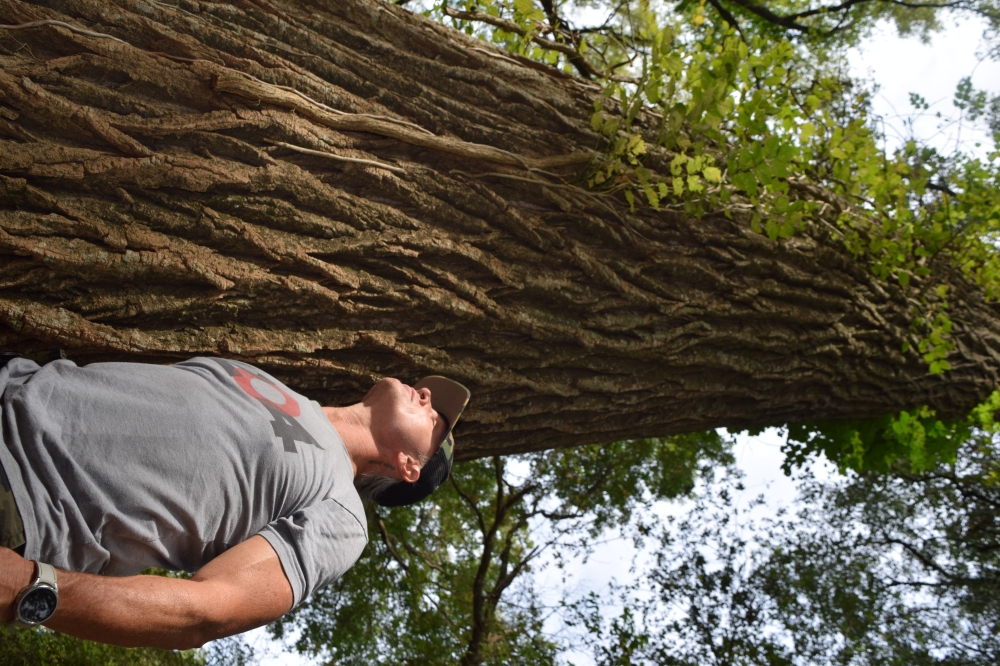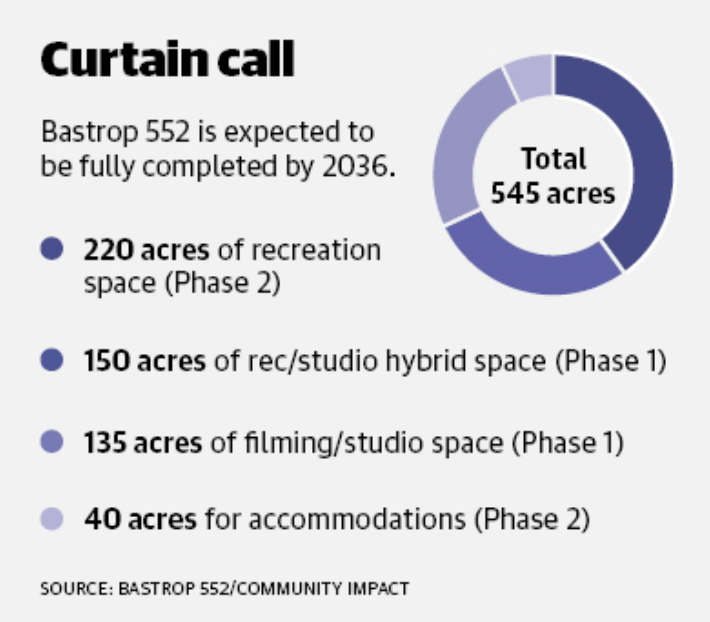Butler said his film-play-stay concept will include live music stages, immersive sets, river activities and more—all over the next decade.
During that time, Bastrop 552 is projected to bring nearly 1,000 jobs to Bastrop, generate over $59 million for the local economy and create over $9 million in local taxes, per an economic impact report conducted by Austin-based consulting firm Impact DataSource.
“The moment I came out here and looked at the property, I had to have it,” he said. “It was like God put me on this path, and this place was it.”

The big picture
Butler, who founded production rental company Line 204 in Los Angeles, said the project experienced delays due to ongoing incentive negotiations with the city—which led to his request for disannexation per Senate Bill 2038, which was signed into law in early 2023. The bill permits landowners to ask to be removed from a municipality’s extraterritorial jurisdiction—the unincorporated area surrounding city limits—allowing them to develop with fewer restrictions.
Butler said he wants to make Bastrop 552 a place for everyone to get a behind-the-scenes look at how films are made without having to travel far.
“Growing up poor in Alabama, we couldn’t have gone all that way, but we could have driven to Texas,” he said. “That’s what we’re trying to create here.”
Butler said his decision to move his career to Texas was made after seeing a steady rise in production costs in California, while Texas continues to increase its film tax incentives.
“Filming a project in Los Angeles can increase budgets by 25-35% due to high costs of goods, rules and regulations, and union wages,” Butler said. “In Bastrop, the construction cost per square foot is $185 compared to $740 per square foot in Los Angeles.”
Martin Jones—head of Austin Studios, part of the Austin Film Society—said he has also seen a slowdown with filming in California.
“Thankfully, production inquiries and new project starts are remaining consistent in Central Texas,” Jones said, noting that the region’s natural beauty and diverse locations fuel those inquiries.
Butler said the steady interest in the region, coupled with Bastrop’s “natural charm and welcoming nature,” sealed the deal for him.

Measuring the impact
Based on Planning and Zoning Commission meetings that took place in June 2021, locals have asked two major questions since the beginning of the project:
- How will this benefit us economically?
- How will this hurt us environmentally?
Per the economic impact report, the project is expected to generate $9.1 million in local tax revenues during the first 12 years, including $4.1 million for the city, $3.9 million for the county and $1.1 million for the school district. Statewide, Bastrop 552 is expected to generate $57.5 million during that time.
On Oct. 9, Adriana Cruz, executive director of the Texas Economic Development and Tourism Office, testified before the Senate Finance Committee on the Texas Moving Image Industry Incentive Program, which aims to boost the Texas economy by providing grants to media productions in the state.
“Since its inception in 2009 ... the program has generated $2.5 billion in in-state spending,” Cruz said, adding that although the incentives make Texas a strong contender against other states, more needs to be done.
Producer Tommy Warren, who opened Elgin’s Spiderwood Studios in 2009, said he was the first in the industry to move into Bastrop County.
“There weren’t a lot of incentives at that time, but I am very hopeful after going to the hearing,” Warren said.
Regarding the environmental consequences, Butler said that although there are no specific water or wildlife regulations at this point in the project, he works with the Lower Colorado River Authority to ensure he is environmentally responsible.
Mel Hamner, Bastrop County Precinct 1 commissioner, said Butler will have to complete an environmental impact study as part of the permit process, adding that the only environmental regulations for the property concern the Colorado River.
Residents living in the Margie’s Way and River Meadows areas—less than 300 feet away—are still concerned, noting that they depend on the undisturbed flora and fauna for a variety of reasons ranging from relaxation to their livelihoods.

Who it affects
- “[Butler] will be eliminating the natural habitat on that property with chemicals like pesticides and herbicides right on the river’s edge. We raise chickens, sheep and honey bees. ... This is our life,” said Christopher Huegel, Bastrop County resident living near Bastrop 552 and owner of Blinderhund Ranch.
- “We want to collaborate, and we want to cooperate. ... With the size of this property and the natural features that it has, it is going to be one of a kind,” said Bill McLean, Austin land use attorney representing Bastrop 552.
Construction will be split into two phases: Phase 1, called 204 Texas, includes the filming areas, and Phase 2, called Butler Ranch, includes the hospitality areas.
Butler said wrap-up is set for the studios and offices in late 2025.
“We will bring the stages on one by one as they’re finished, but all eight of them will be in operation by early 2026,” he said. “Our existing clientele includes Disney, HBO, Netflix, Universal Studios and many, many more. We will continue working with them and expanding our reach as we grow.”
The hospitality areas should begin opening next summer, he said.
“A big chunk of them will be done by the end of 2026,” he said, adding that he expects to expand those offerings over the next decade.
Butler said he and his team are excited to see the project come to fruition, and explained that he does not plan to change Bastrop’s way of life—only to enhance it by adding to the local economy, and maybe the occasional celebrity sighting.
“Bastrop provides for a once-in-a-lifetime opportunity where the imagination is the limit,” Butler said. “I’m not looking to California your Texas, but to Tex-ify Hollywood with star-studded Southern hospitality.”






